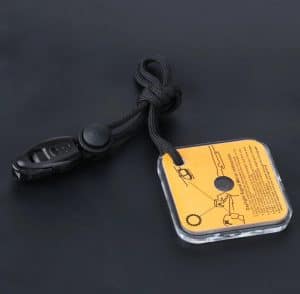Often at times, most people pay more attention to shelter, food, water, and how to survive in the wild that they forget on how to call for help when things get out of hand. Signaling for help is perhaps the most important skill any survivalist must master.
It could mean the difference between life and death. You must hone the many different ways to catch the attention of authorities or rescue parties in times of emergencies. It could be sad if you were to survive a dire situation only to die because you couldn’t be rescued in time.
It is erroneous to depend on your cell phone or a smartphone to call for help. Perhaps network connectivity is unavailable in the wilderness. Can you still find rescue in a survival scenario? I guess not. This is why honing other skills can help you signal for help.
Knowing the different signals is not enough. Think of what would happen if you were to signal a passing plane without using appropriate technique that pilots can interpret. You cannot expect help to come. This is why you must know the appropriate signals to send and the techniques to convey them.
Here are some tips on how to signal for help in the wilderness to catch attention and guarantee you a rescue.
1. Signal Using Smoke and Fire

Smoke and fire are among the most recognizable signals in the wilderness. They work best whether you are signaling during the day or night. This is because rescue planes and crews get special training on how to spot smoke and fire signals during a rescue operation.
However, a single fire cannot make a signal. You’ll have to make three fires. First, you need to look for an open area. You will then need to create three fires to take the shape of a triangle. Place each fire at the corners of the triangle with each fire about 100 feet apart.
Three fires burning in a triangular fashion is an international signal for rescue. Rescuers around the world know what it means and will quickly come to your aid. An alternative is lighting three fires and placing then in a straight line with each fire being 100 feet from each other. Creating three fires and placing them as described can irksome for one person.
In this case, you can make a single large fire along with other methods described herein. Keep in mind that the more signals you send the higher the chances of the rescue teams finding you.
During the daylight, fireballs may be difficult to spot especially in the bright sunlight. However, a thick smoke will do the trick. Smoke works well in signaling passing flames especially if the sky is clear. Keep in mind that the rule of three still applies. Three plumes of thick black smoke make in a triangular fashion will attract the attention or rescue crew.
Note that fire may not be a good method to call for help during the day, in a rainy season. On the other hand, using smoke in high windy days, wet or snow area can also minimize your chances of getting rescued. Take caution when using fire since it can spread to the nearest vegetation and cause destruction especially during high winds.
2. Use of a Mirror or Any Reflective Surface

A mirror is as effective as fire although low tech. However, using a mirror to signal for help in the wilderness requires you to master the technique. You will have to practice how to accurately reflect light rays at a particular target that is often too far away in order to use a mirror successfully.
While you can use any mirror, there are special survival mirrors designed to reflect as much light as possible to create an easily recognizable signal. Such mirrors are usually equipped with sight to help you aim at your target with some ease. Aiming with a simple mirror can be a daunting task although possible.
To aim at a point, simply hold your survival mirror under your eye. Hold the other hand in front of you. Manipulate the position of the mirror until you manage to focus a beam of life on the tip of one of your fingers. You will use this as your line of sight when searching for a target. The finger will act as a guide.
With this try focusing on a passing plane by getting a ray of light in the direction of the plane. Rock the mirror back and forth and up and down. The pilot of the plane or a rescue crew may spot the light and follow it to your direction.
In the absence of a mirror, you can improvise things such as CD, belt buckle or even your wristwatch to send a mirror signal. Though these items may not be as efficient as a survival mirror, a keen eye will spot the moving light and come to your rescue.
3. Sending an Audio Signal
Your voice can appeal for help especially if you are in a location close to an access road or a residential area. However, it is limited in the scope of an area it can reach. Besides, you can only shout for a short time. This is where you will need a whistle.
Similar to a fires signal, blow your whistle at the top of your breath three times of equal intervals. The intervals vary but you can maintain them at about 30 seconds. Every blow should last about 5 seconds. Wait for a short while and then blow the whistle three times. Nearby rescues will interpret this as a distress call for help.
Audio signals are not limited to yelling and blowing whistles. You can also use the sound of a gunshot. Simply fire your gun in three times just like the whistle. In case you do not have a gun or a whistle, you can still signal for help by hitting a dry log with a stick three times at intervals. Dry logs have a reputation of producing loud cracking sounds that can be heard several miles away. Rescues will soon come your way.
4. Creating Ground to Air Signals
The help signals we have already described are good enough. However, the more skills you develop the better are your chances of survival. Creating ground to air signals is effective if you are stranded in an island desert or thick woods. This is because your rescue will most likely come from the skies.
The methods we discussed earlier need you to be actively staring at the skies. Ground-to-air-signals are passive but still effective. A good trick is to find a large open area in the jungle. Gather anything you can from large rocks and boulders, tree branches and even clothing. Use these to write a large message in the learning.
The message on the ground should have a different color from the surrounding in order to build a contrast to the eyes. For instance, use green leaves and pines on ice carpeted ground. Similarly, dark logs and rocks will also create enough contrast to be seen from the air. Each message should be a yard or so wide and a few yards tall.
Messages like “HELP” or “SOS” are universally accepted as standards in requesting for help in the wilderness. Letter “X” is a reliable signal that you need medical assistance. Conversely, letter “V” means you are requesting for help. You can also go further and create a large arrow to point to your direction.
You also need to know what certain responses by a passing plane mean. If it circles around your passive message then it is possible the crew does not understand what you mean. If the plane rocks its wings back and forth then rest easy because the crews see your message and understand it. Regardless of the response, you can now light fires or make smoke to confirm your position.
5. Using a Satellite Phone
Using mobile phones to signal for help may not be an ideal choice since they may run out of battery or lose network connection thus rendering them useless. This is where a satellite phone comes in. Unlike mobile phones which rely on towers for network, which at times may lose connection, a satellite phone routes calls via satellites.
Though owning a satellite phone may be costly and may require you to purchase a prepaid card to get connected, it is reliable.
6. Using Personal locator beacons
In case you cannot afford a satellite phone a personal locator beacon can be used instead. A good example of a personal locator beacon is an Emergency Position Indicator Radio (EPIR).
What a personal locator beacon does is send signals via a powerful GPS beacon to global search and rescue satellite systems with your exact location in times of emergency. In case you plan to use this device, ensure the battery can last you longer to avoid any disappointments.
7. Making Use of Ground Markers
The last but not least tip on signaling for outdoor help is by using ground markers. If you have sent out signals and no help tend to come your way then it is possible some rescue crews are combing the jungle for you. Leave signals on the ground for the search party to find. The marker should lead them in your direction.
Ground markers are very important if you are forced to change location while waiting for help to arrive. The markers can be anything. They can range from something simple as tying a cloth on tree trunks to making a large arrow in the ground pointing to your direction. You can also write a short message on pieces of duct tape stuck on trees.
In case you do not have a duct tape with you, you can write messages directly by marking the trees with permanent ink.

Things to note
- Using a wrong method like smoke and fire when the day is not favorable will delay the rescue
- When writing your messages on duct tapes, trees and clothes, consider the colors you use. Wrong selection of colors may cause delays and probably no one would notice them.
- To avoid disappointments, you should ensure you are well equipped with necessary equipment’s before your adventure.
- Never rely on one method. Utilize different methods by using them correctly to increase the response time
- When using ground markers or duct tapes, ensure the marks or written messages are visible and large enough
- Audio messages are transmitted faster when facing on the direction to which the wind is blowing to
- Satellite phone and personal locator beacons are a great choice during the night when other methods like ground markers, air signals, and audio messages are not applicable.
- Avoid walking alone in the wilderness. If you are a large group, you can split in small groups and ensure you are in close contact with other members
Final Verdict
No one can foretell with certainty when the unexpected is about to happen. To avoid any embarrassment, you need to master these survival tips and know when each method works best. All the above tips discussed previously are important. Any single of them can act as a good signal.
However, using several of these tips altogether is a smart way of ensuring you get quick help. The methods are simple and low-tech yet they are handy in helping you obtain help when you are stranded in the wilderness. To master them and know when to use them appropriately, you can begin by practicing them early enough before taking your adventure.

